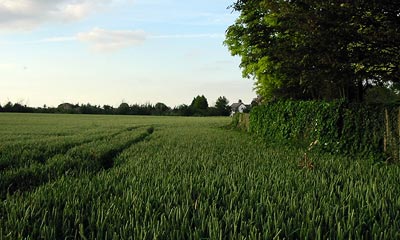500,000 new homes for M11 region
Plans to build half a million homes between the Wash and the Thames by 2021 were approved yesterday by the eastern regional assembly despite Essex and Hertfordshire councils' belief that the counties could not cope with the additions.
The main area for growth would be the M11 corridor between north London, Stansted and Cambridge, much of it on green belt.

The decision was made under pressure from the planning minister, Lord Rooker, who insisted that the area between London and Cambridge was "a growth corridor".
This area was at first either side of the M11 but has been widened and extended north to provide more space for housing. It now includes Peterborough, the whole of Cambridgeshire, parts of north Hertfordshire, including Stevenage, and other areas in Essex.
Yesterday at a meeting in Hertford 478,000 of the new properties were "distributed" among the eastern counties and the assembly agreed to find land for another 18,000.
Hertfordshire, where most of the undeveloped land is green belt, had agreed to try to find space for 50,000 homes but the county was allocated 72,000 and fears it will get a large share of the additional 18,000 as well. A spokesman said at least 25,000 would have to go on greenfield sites. Essex has been told it must find room for 131,000 homes.
With the government backing expansion at Stansted and Luton airports the eastern counties nearest London were said at the meeting "to feel as if they are inside a pressure cooker coming to the boil".
In Hertfordshire alone the housing allocation means building two new towns, one the size of St Albans and another comparable to Stevenage, in the next 20 years. Harlow, in Essex, would have to expand dramatically.
Derrick Ashley, a Hertfordshire county councillor, said that the government was turning south-east England into a kind of Hong Kong, an industrial and commercial power house for the UK. "This may be good for economic growth but it is not in the best social and environmental interests of the country as a whole. What is needed in the south-east is social housing but this kind of numbers game does not address this issue at all."
He said Hertfordshire was already the most overcrowded county in England. "What concerns, apart from losing our greenfields is that the roads, rail links, hospitals and schools are already overstretched yet there are no plans for the government to address these issues. How are the extra people going to get about on the M25, M11, M1 and on the railway lines that are already overcrowded?"
A Hertfordshire and Essex joint proposal that was put before the eastern regional assembly meeting in Hertford yesterday to reduce the number of new homes to 442,000, was rejected.
Hertfordshire council said in a statement that a shadow had fallen over the county.
Mr Ashley said: "Decisions about the future of Hertfordshire are being made by an unelected body that does not properly represent the people of Hertfordshire." He said powers for strategic planning had been taken away from the county councils and given to a regional body which was pushing them through at the behest of the government.
He added: "The assembly has rushed into making decisions without a proper assessment of the true environmental impact and infrastructure requirements, not to mention the added pressure that the expansion of Stansted and Luton airports will have on our already overburdened road and rail network."
There will be a period of public consultation over the decision prior to a public inquiry in the summer of 2005. The government is then expected to approve the plan during 2006.
The Guardian, 06.02.2004
